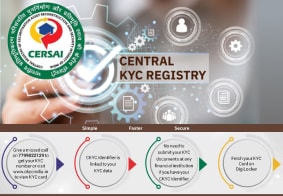CKYC Registry
-
Customer Service Contact us Service request Locate a branch
Find all the help you need
Scan the QR, get our app, and find help on your fingertips

Help CenterSupport topics, Contact us, FAQs and more
-
Login
Are you ready for an upgrade?
Login to the new experience with best features and services
-
Login
Are you ready for an upgrade?
Login to the new experience with best features and services
- Accounts
-
Deposits
IDFC FIRST Bank Deposits
View all Deposits -
Loans
IDFC FIRST Bank Loans
View all Loans - Wealth & Insure
-
Payments
IDFC FIRST Bank Payments
View all Payments -
Cards
IDFC FIRST Bank Cards
View all Cards - Blogs
- Corporate Account
-
Cash Management Services
IDFC FIRST Bank Cash Management Services
View all Cash Management Services - Supply Chain Finance
-
Corporate Lending
IDFC FIRST Bank Lending
View all -
Treasury
IDFC FIRST Bank Treasury
See more details - NBFC Financing
Support topics, Contact us, FAQs and more
- IDFC FIRST Bank Accounts
-
Savings Account
-
Corporate Salary
Account -
Senior Citizens
Savings Account -
First Power
Account -
Current Account
-
NRI Savings
Account -
TASC Institutional
Account -
Savings Account
Interest Calculator
- IDFC FIRST Bank Deposits
-
Fixed Deposit
-
Recurring Deposit
-
NRI Fixed Deposit
-
Safe Deposit Locker
-
FD Calculator
-
RD Calculator
- IDFC FIRST Bank Loans
-
Personal Loan
-
Consumer Durable
Loan -
Home Loan
-
Business Loan
-
Professional Loan
-
Education Loan
-
New Car Loan
-
Pre-owned Car Loan
-
Two Wheeler Loan
-
Pre-owned Two
Wheeler Loan -
Commercial Vehicle
Loan -
Gold Loan
-
Loan Against Property
-
Loan Against Securities
-
Easy Buy EMI card
-
Personal Loan
EMI Calculator -
Education Loan
EMI Calculator -
Home Loan
EMI Calculator
- IDFC FIRST Bank Wealth & Insure
-
FIRST Select
-
FIRST Wealth
-
FIRST Private
-
Mutual Funds
-
Sovereign Gold Bond
-
Demat Account
-
Term Insurance
-
Life Insurance
-
Health Insurance
-
General Insurance
-
Bonds
-
Loan Against
Securities -
Portfolio Management
Service
- IDFC FIRST Bank Payments
-
FASTag
-
Credit Card
Bill Payments -
UPI
-
Funds Transfer
-
Forex Services
-
Pay Loan EMI
- IDFC FIRST Bank Cards
-
Ashva :
Metal Credit Card -
Mayura :
Metal Credit Card -
FIRST Millennia
Credit Card -
FIRST Classic
Credit Card -
FIRST Select
Credit Card -
FIRST Wealth
Credit Card -
FIRST WOW!
Credit Card -
Deals
-
Debit Cards
-
Co-branded Cards
-
Credit Card
EMI Calculator -
FIRST Corporate
Credit Card -
FIRST Purchase
Credit Card -
FIRST Business
Credit Card
- Premium Metal Credit Cards
-
AshvaLifestyle1% Forex₹2,999
-
MayuraLifestyleZero Forex₹5,999
-
FIRST PrivateInvite Only
- Best for travellers
-
MayuraZero ForexMetal₹5,999
-
Ashva1% ForexMetal₹2,999
-
FIRST WOW!Zero ForexTravelLifetime Free
-
FIRST SWYPTravel OffersEMI₹499
-
FIRST Select1.99% ForexLifestyleLifetime Free
-
FIRST Wealth1.5% ForexLifestyleLifetime Free
-
Club VistaraTravelLifestyle₹4,999
-
IndiGo IDFC FIRST Dual Credit CardTravelLifestyle₹4,999
- Max benefits, Free for life
-
FIRST Classic10X RewardsShoppingNever Expiring Rewards
-
FIRST Millennia10X RewardsShoppingNever Expiring Rewards
-
FIRST Select10X RewardsLifestyle1.99% Forex
-
FIRST Wealth10X RewardsLifestyle1.5% Forex
-
FIRST WOW!RewardsTravelZero Forex
-
LIC ClassicRewardsInsuranceShopping
-
LIC SelectRewardsInsuranceShopping
- Reward Multipliers
-
AshvaLifestyleMetal₹2,999
-
MayuraLifestyleZero Forex₹5,999
-
FIRST ClassicNever Expiring RewardsShoppingLifetime Free
-
FIRST MillenniaNever Expiring RewardsShoppingLifetime Free
-
FIRST SelectNever Expiring RewardsLifestyleLifetime Free
-
FIRST WealthNever Expiring RewardsLifestyleLifetime Free
- Rewards & Credit on UPI
-
FIRST Power+FuelUPI₹499
-
FIRST PowerFuelUPI₹199
-
FIRST EA₹NVirtual1% Cashback₹499
-
FIRST DigitalVirtualUPI₹199
-
IndiGo IDFC FIRST Dual Credit CardUPITravelDual cards
- Fuel and Savings
-
FIRST PowerRewardsUPI₹199
-
FIRST Power+RewardsUPI₹499
-
LIC ClassicRewardsInsuranceShopping
-
LIC SelectRewardsInsuranceShopping
- Express and Flaunt
-
AshvaMetal1% Forex₹2,999
-
MayuraMetalZero Forex₹5,999
-
FIRST SWYPEMIOfferMAX₹499
-
FIRST MillenniaRewardsShoppingLifetime Free
- FD Backed rewarding Credit Cards for all
-
FIRST EA₹NVirtualCashback₹499
-
FIRST WOW!Zero ForexTravelLifetime Free
-
CreditPro Balance TransferTransfer & SaveReduce InterestPay Smartly
- IDFC FIRST Bank NRI Forex Solutions
-
Send money to India-Wire transfer
-
Send money to India-Digitally
-
Send money abroad
-
Max Returns FD (INR)
- IDFC FIRST Bank MSME Accounts
-
Platinum Current
Account -
Gold
Current Account -
Silver Plus
Current Account -
Merchant Multiplier
Account -
Agri Multiplier
Account -
TASC Institutional
Account -
Dynamic Current
Account -
World business
Account -
First Startup
Current Account
- IDFC FIRST Bank Business Loans
-
Business Loan
-
Professional Loan
-
Loan Against Property
-
Business Loan for Women
-
Working Capital Loan
-
Construction Equipment Loan
-
Machinery Loan
-
Healthcare Equipment Loan
- IDFC FIRST Bank Business Solutions
-
Payment Solutions
-
Tax Payments
-
Doorstep Banking
-
Point of Sale (POS)
-
Escrow Accounts
-
NACH
-
Payment Gateway
-
UPI
-
Virtual Accounts
-
As per amendment in the Income Tax Rules, PAN or Aadhaar are to be mandatorily quoted for cash deposit or withdrawal aggregating to Rupees twenty lakhs or more in a FY. Please update your PAN or Aadhaar. Kindly reach out to the Bank’s contact center on 1800 10 888 or visit the nearest IDFC FIRST Bank branch for further queries.
-
-
Most Searched
Sorry!
We couldn’t find ‘’ in our website
Here is what you can do :
- Try checking the spelling and search
- Search from below suggestions instead
- Widen your search & try a more generic keyword
Suggested
Get a Credit Card
Enjoy Zero Charges on All Commonly Used Savings Account Services
Open Account Now
Finance
Digital Rupee, e₹, and e₹ wallet: Everything you should know about this digital currency
key Takeaways
RBI launched its official digital currency as a pilot in November 2022.
IDFC FIRST Bank is one of the few institutions entrusted to streamline e-Rupee in India.
e-Rupee can be used through a wallet like your regular UPI wallet.
Find out the transaction limits on the e-Rupee.
Our lives have become increasingly digital, and this transformation has been rapid. The impact of digitisation can be seen in all aspects of Indian society, from basic household chores to the functioning of reputed organisations like banks, hospitals, schools, etc. The latest in this line of impact is our currency.
As part of the "Digital India" initiative, the Reserve Bank of India (RBI) has been implementing the Digital Rupee (e-Rupee) for specific use cases since November 2022. The e-Rupee is the latest step in India's digital revolution, providing citizens with an efficient and secure way to conduct digital transactions.
Considering that electronic wallets are still in their infancy, some questions will arise in the minds of consumers. Read on to find out all about what is digital e-Rupee and e-Rupee wallets.
What is Digital Rupee or e-Rupee?
Also known as Central Bank Digital Currency (CBDC), the e-Rupee is a digital form of currency notes issued by the central bank. Consumers need an e-Rupee wallet to carry and use digital currency. This wallet is bank-issued and can be linked to a bank account to load cash into it.
What are the advantages of the Digital Rupee?
Here are some of the key advantages of the e-Rupee –
- Digital currency is a fast, secure, and reliable method of daily payments and monetary transactions
- The Digital Rupee is a sovereign currency issued by the RBI. It is accepted as legal tender by government bodies, companies, and merchants as a reliable payment method
- You can easily convert Digital Rupees into bank deposits and vice-versa
- Like handling physical cash, having a bank account is unnecessary to perform Digital Rupee transactions, making it more accessible. However, you need a bank account linked to your digital wallet to load and withdraw money
- Digital currency is immune to physical damage such as rips, tears, burning, etc.
- Being regulated by the apex banking authority in India, it is secure from frauds/scams and has a very low risk of volatility
- You can easily access your Digital Rupees from your mobile devices at your convenience
Will e-Rupee replace cash, debit cards, and credit cards?
No. e-Rupee will not replace existing forms of money but will act as an additional method for users to make payments. The RBI said, “CBDC is aimed to complement, rather than replace, current forms of money and is envisaged to provide an additional payment avenue to users, not to replace the existing payment systems.”
What is the difference between Digital Rupee and cryptocurrency?
While the Digital Rupee is similar to cryptocurrency in terms of payments, safety, and reliability, it is not a decentralised currency like cryptos are. Cryptocurrencies are unregulated, which means there is no governing body to regulate their norms.
On the other hand, the Digital Rupee is a sovereign currency recognised as legal tender by the Government of India and other organisations. You can use this currency anywhere to make purchases and send money. Moreover, while cryptocurrencies fluctuate based on supply and demand, the Digital Rupee has a fixed denomination whose value will not change.
A significant difference between e-Rupee and cryptocurrency is that cryptocurrencies can be traded depending on price fluctuations, while e-Rupee cannot, and it works like a physical currency.
Who can use e-Rupee?
A few customer banks have been chosen to participate in the Closed User Group (CUG) in the first pilot of central bank digital currency for retail products such as e-Rupee loans and deposit products. IDFC FIRST Bank is one of them. IDFC FIRST Bank customers can use the currency, avail of its benefits, and get a glimpse of the future of digital currency in India.
What is an e-Rupee wallet?
An e-Rupee wallet is like ayour bank's e-Rupee app stores physical wallet in electronic form. Available on Android and iOS devices, the e-Rupee app of your bank will store your digital currency exactly as the bank currency notes are stored in the physical wallet.
How can I load money into my e-Rupee wallet?
Loading money into your e-Rupee wallet is easy and quick. You need to download the IDFC FIRST Bank Digital Rupee app and register using the number whitelisted and linked to your IDFC FIRST Bank account. Once you have registered successfully and your wallet ID is created, you can load the wallet through the IDFC FIRST Bank account or UPI apps on the same device by following the steps below –
1. On the app home page, tap ‘Load’
2. Enter the amount or select denominations by swiping up for the amount you want to add. Tap on ‘Load Digital Rupee’
3. You can choose any of the modes mentioned below to add Digital Rupees to your wallet and follow the onscreen instructions –
a) Transferring funds from your linked bank account
b) Transferring funds through different UPI apps
After successful PIN verification, the linked account will be debited, and the e-Rupee will be instantly credited to your digital wallet in the same denominatio.
How to redeem an e-Rupee wallet and transfer that to a bank account?
Redeeming Digital Rupees from the e-Rupee wallet is straightforward. All you have to do is –
- On the app home page, tap 'Redeem'
- Select denominations by swiping up for the amount you want to redeem. Tap on ‘Redeem Digital Rupee’
- Choose the linked bank account to be credited and follow the onscreen instructions
After successful PIN verification, the linked account will be credited with the equivalent amount, and the e-Rupee wallet will be debited instantly.
How to use an e-Rupee wallet and pay with it?
e-Rupee wallet consumers can only perform wallet-to-wallet transfers for payments to start with. This means they can only make payments to -
- Another user with a CBDC wallet (IDFC FIRST Bank and Non-IDFC FIRST Bank)
- Merchants with CBDC wallet via QR code scan-and-pay mechanism
To transact using a digital wallet,
- On the app home page, tap 'Send'
- You can send the e-Rupee via Digital Rupee VPA or phone number of the beneficiary who has registered for the e-Rupee or scan the e-Rupee QR code
Transactional limitations of e-Rupee wallet
The Digital Rupee has the same denominations as the existing physical Indian currency, such as ₹0.50, ₹1, ₹200, ₹500, etc. There are, however, certain restrictions regarding holding capacity, per-day loading, per-day transfer, and per-day unloading.
Here are the key e-Rupee wallet limitations that you should be aware of -
Particulars |
Limits |
Holding capacity for wallet (amount) |
₹2,00,000 |
Per day load (amount) |
₹2,00,000 |
Per day transfer (inward amount) |
|
No. of load (count) |
30 |
No of transfer (inward count) |
|
Per day unload (amount) |
₹2,00,000 |
Per day transfer (outward amount) |
|
No. of unload (count) |
30 |
No. of transfer (outward count) |
|
Per transaction (pay/collect) |
₹2,00,000 |
The e-Rupee roundup
CBDCs offer several advantages over traditional currencies, such as faster and cheaper transactions, better financial inclusion and increased security. IDFC FIRST Bank is at the forefront of this revolution and is committed to providing its customers with the best possible access to digital currencies.
Frequently Asked Questions
How is the e-Rupee different from UPI or other fund transfer modes (NEFT/RTGS/IMPS)?
e-Rupee is money, i.e. the digital representation of physical money. UPI or other transfer modes like NEFT, RTGS and IMPS are payment systems used to move money from one account to another.
Is e-Rupee the same as cryptocurrency, such as bitcoin?
The e-Rupee is quite different from cryptocurrencies. The differences include –
- The e-Rupee is issued by the RBI, while cryptocurrencies don’t have any central authority
- e-Rupee is centralised and is a part of the traditional banking system
- Cryptocurrencies exist outside the purview of the banking system and are decentralised
- The e-Rupee is backed by RBI against its paper currency, while a cryptocurrency doesn’t have any assets to back it up
- The value of the e-Rupee is fixed, while cryptocurrencies fluctuate in value depending on the market demand and supply
Disclaimer
The contents of this article/infographic/picture/video are meant solely for information purposes. The contents are generic in nature and for informational purposes only. It is not a substitute for specific advice in your own circumstances. The information is subject to updation, completion, revision, verification and amendment and the same may change materially. The information is not intended for distribution or use by any person in any jurisdiction where such distribution or use would be contrary to law or regulation or would subject IDFC FIRST Bank or its affiliates to any licensing or registration requirements. IDFC FIRST Bank shall not be responsible for any direct/indirect loss or liability incurred by the reader for taking any financial decisions based on the contents and information mentioned. Please consult your financial advisor before making any financial decision.
The features, benefits and offers mentioned in the article are applicable as on the day of publication of this blog and is subject to change without notice. The contents herein are also subject to other product specific terms and conditions and any third party terms and conditions, as applicable. Please refer our website www.idfcfirstbank.com for latest updates.























